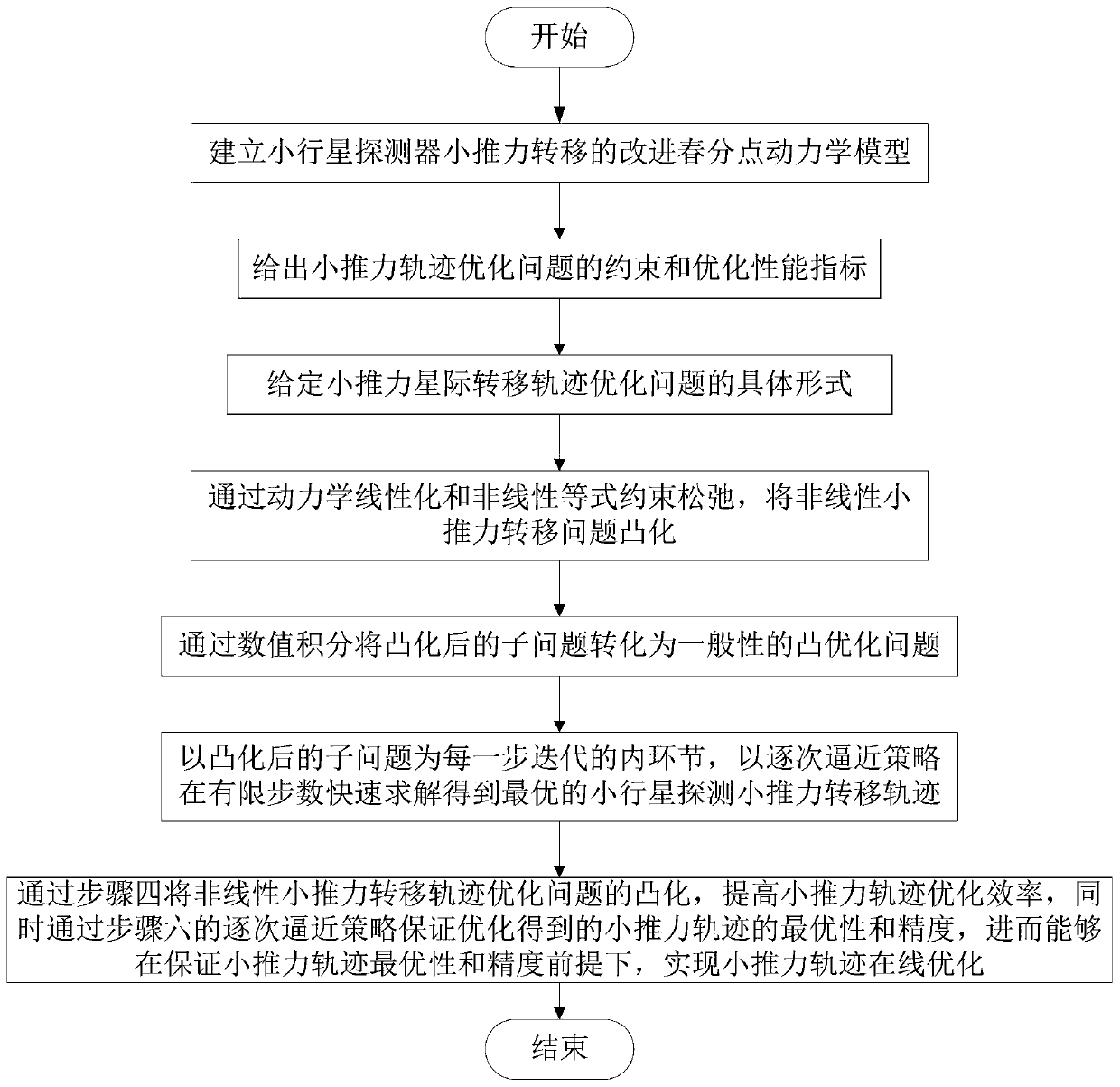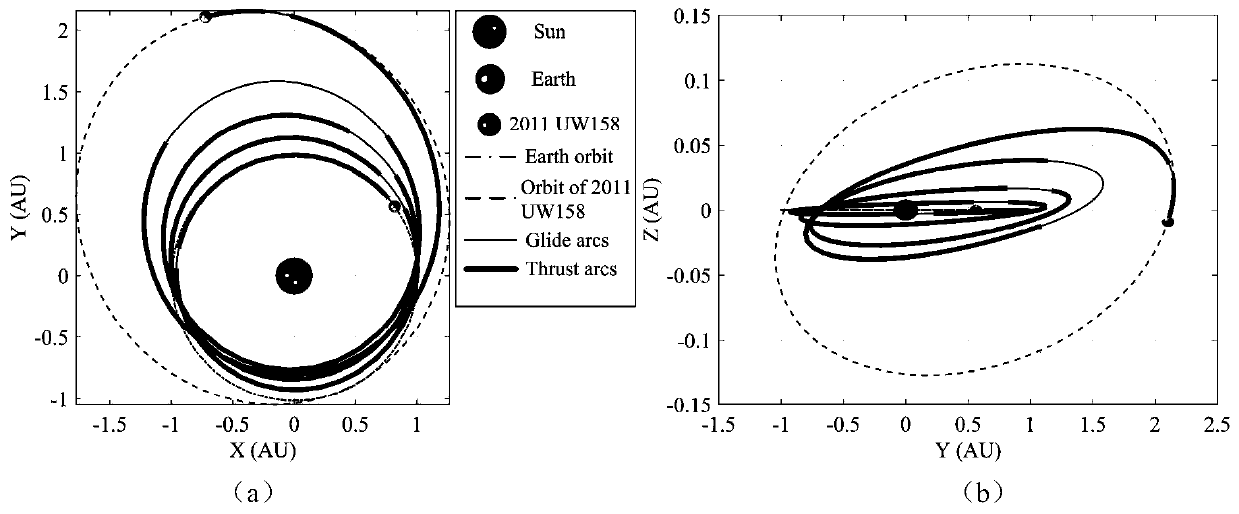Asteroid detection low thrust transfer trajectory optimization method based on successive convex programming
A technology for transferring trajectories and optimization methods, which is applied in the aerospace field and can solve problems such as difficulty in solving initial values, and difficulty in determining optimality.
- Summary
- Abstract
- Description
- Claims
- Application Information
AI Technical Summary
Problems solved by technology
Method used
Image
Examples
Embodiment 1
[0074] Such as figure 1 As shown, the method for optimizing the trajectory of a small thrust transfer trajectory for asteroid detection based on successive convex programming disclosed in this embodiment includes the following steps:
[0075] Step 1: Establish an improved equinox dynamics model for the small thrust transfer of the asteroid probe.
[0076] The improved equinox dynamics model for the interstellar transfer process of the asteroid probe is:
[0077]
[0078] Among them, the orbital element x=[p,f,g,h,K,L] of the improved vernal equinox is selected to represent the motion state of the asteroid probe, so only L is a fast variable. In vector x, p=a(1-e 2 ), f=ecos(ω+Ω), g=esin(ω+Ω), h=tan(i / 2) cosΩ, K=tan(i / 2) sinΩ, L=Ω+ω+υ. Where a, e, i, ω, Ω and υ are the semi-major axis of the orbit, eccentricity, orbital inclination, argument of perigee, right ascension of ascending node and true anomaly, respectively. In addition, m is the mass of the detector, T is the ...
PUM
 Login to View More
Login to View More Abstract
Description
Claims
Application Information
 Login to View More
Login to View More - R&D
- Intellectual Property
- Life Sciences
- Materials
- Tech Scout
- Unparalleled Data Quality
- Higher Quality Content
- 60% Fewer Hallucinations
Browse by: Latest US Patents, China's latest patents, Technical Efficacy Thesaurus, Application Domain, Technology Topic, Popular Technical Reports.
© 2025 PatSnap. All rights reserved.Legal|Privacy policy|Modern Slavery Act Transparency Statement|Sitemap|About US| Contact US: help@patsnap.com



